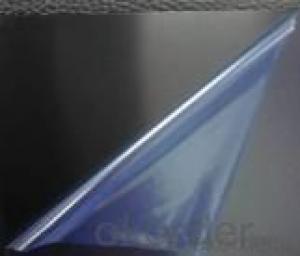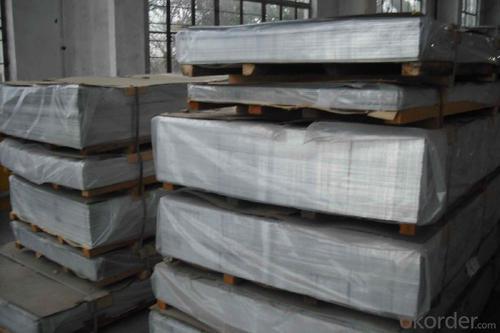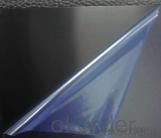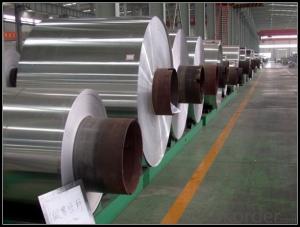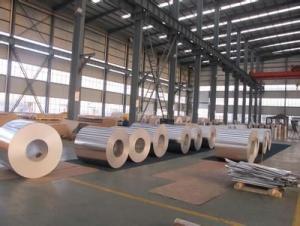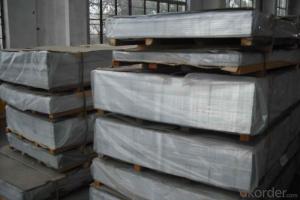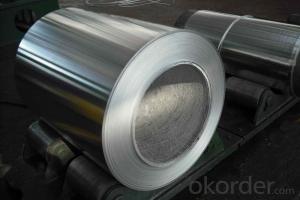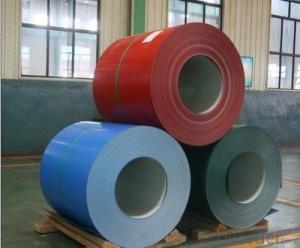High Quality Mill Finished Aluminum Coil for ACP - Price of Aluminum Sheets
- Loading Port:
- Shanghai
- Payment Terms:
- TT OR LC
- Min Order Qty:
- 1 m.t.
- Supply Capability:
- 2000 m.t./month
OKorder Service Pledge
OKorder Financial Service
You Might Also Like
Specification
Structure of Prepainted Aluminium Coil PPGL Description:
Coated aluminum coil/sheet are of a wide range of colors, which gives wonderful appearance no matter in residential and commercial constructions of great exhibition centers.
The coated aluminum coil/sheet have been widely used in the fields of construction and decoration( garage doors, ceiling etc.), electronic appliances, lighting decoration, air-condition air pipes, sandwich panels and drainages etc.
Main Features of Aluminium Coil PPGL:
Mainly in Construction, decoration, PCB materials, cover material, LCD back panel, refrigeration, air conditioner, automobile, etc
Images of Aluminium Coil PPGL:
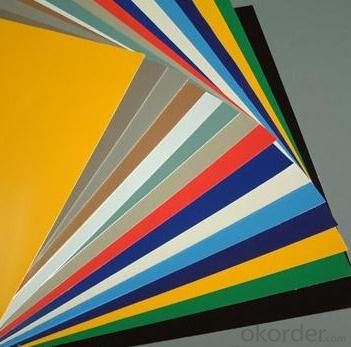
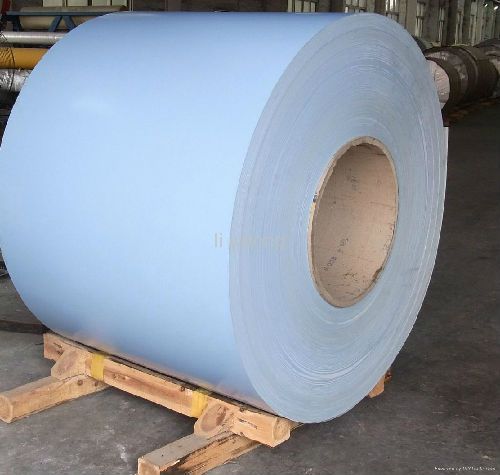
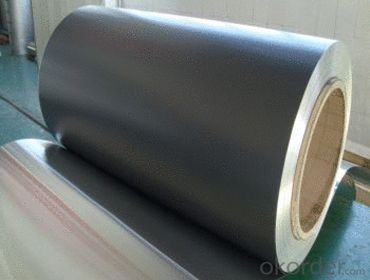
Aluminium Coil PPGL Specification:
Product Name | Aluminum Coil |
Alloy | A1100,A3003,A1050,A8011,A3105,A5005 etc |
Thickness | 0.022mm to 3.0 mm |
Width | Standard width:1240mm; 1200mm |
All width: 30mm - 1600mm | |
Diameter | out dia:1200mm |
Interior dia: 405mm,505mm | |
Weight | 2.5 T/coil,3.0 T/coil |
Coating | PE,PVDF,ACRYLIC |
Surface | Embossed, mill finish, coated; aluminum gutter coil |
Color | AS to all RAL color |
Gloss | 10-90%(EN ISO-2813:1994) |
Coating Thickness | PE: more than 18 micron |
PVDF: more than 25 micron | |
Coating Hardness (pencil resistance) | More than 2h |
Coating adhesion | 5J(EN ISO-2409:1994) |
Impact Resistance | No peeling or cracking(50 kg/cm,ASTMD-2794:1993) |
Flexibility (T-bend) | 2T |
MEK resistance | More than 100 |
FAQ of Aluminium Coil PPGL:
1.Superior quality of raw material.
2.Reasonable and stable chemical composition.
3.Accurate tolerance.
4.Goode mechanical property.
5.We have the certificate of ISO9001.
- Q: What kind of material is wood grain aluminum sheet?
- Wood grain aluminum plate itself is the main aluminum alloy,The surface of that wood grain should be paint or ink
- Q: Are aluminum sheets suitable for outdoor use?
- Yes, aluminum sheets are suitable for outdoor use. Aluminum is a highly durable and corrosion-resistant material, making it ideal for outdoor applications. It is lightweight, yet strong enough to withstand harsh weather conditions, such as rain, snow, and UV radiation. Additionally, aluminum sheets can be coated or painted to further enhance their resistance to corrosion and provide added protection against the elements. This makes them a popular choice for outdoor structures, signage, roofing, and other exterior applications where durability and longevity are essential.
- Q: A 15.1 g aluminum block is warmed to 53.2 °C and plunged into an insulated beakercontaining 32.6 g of water initially at 24.4 °C. The aluminum and the water are allowed to cometo thermal equilibrium.Assuming that no heat is lost, what is the final temperature of the water and aluminum?
- To solve this problem, you need the heat capacity of water and Al, I know off hand the heat capacity of water but you'll need to look it up for Al. From the problem, you know that the heat given up as the aluminum cools is gained by the water heating up. As there is no phase change, the heat gained (or lost) is mass * heat capacity * temperature change energy gained by water = energy lost by Al. Let Tf be the final temperature of the Al and water. 32.6 g * 4.18 J/gK * (Tf - 24.4C) = 15.1 g * heat capacity of Al * (53.2 C - Tf) Solve for Tf. Because there is almost twice as much water as Al and water has a higher heat capacity than Al, the temperature will be closer to 24.4C than it is to 53.2C
- Q: Do 101 aluminum sheets have any specific certifications or standards?
- Yes, 101 aluminum sheets typically have certifications and standards that ensure their quality and performance. These may include certifications like ASTM (American Society for Testing and Materials) and standards such as AA (Aluminum Association) standards, which verify the material's composition, mechanical properties, and manufacturing processes. Additionally, specific industry certifications like ISO 9001 (International Organization for Standardization) may be applicable to ensure consistent quality control during production.
- Q: What is the typical tensile strength of aluminum sheets?
- The specific grade or alloy being used can cause variations in the typical tensile strength of aluminum sheets. Typically, the tensile strength of aluminum sheets falls between 20,000 and 50,000 pounds per square inch (psi). It is worth mentioning that this is a wide range and the exact tensile strength can be affected by factors such as the sheet's thickness, the manufacturing process, and any additional treatments or coatings applied to the aluminum. Hence, it is advisable to refer to the manufacturer's or supplier's specifications for accurate information regarding the tensile strength of a particular aluminum sheet.
- Q: How many atoms are in a 2.80 cm* 2.80cm*2.80cm cube of aluminum?
- 2.8cm * 2.8cm * 2.8cm= 21.95 cm^3 is volume of Aluminum present Density of Al = 2.7g/cm^3 Convert volume of aluminum into grams of Aluminum, make sure your units cancel 21.95 cm^3 * (2.7g/1 cm^3) = 59.26 g Al Next, find how many moles of Al you have. MW Al = 27g/mol 59.26/27 = 2.19 moles Al Use Avogadro's number to find number of atoms of Al - 2.19 moles Al * (6.022x10^23 atoms/1 mol Al) = 1.32x10^24 atoms Al
- Q: We just bought a house with aluminum wiring and we knew about it in the inspection report, but everyone kept telling us it's no big deal. There was so much going on and I didn't look into it myself and now I just surfed the web on it and I am filled with anxiety! Please help! Did we make a huge mistake? How common are the dangers? Also, my insurance company didn't ask me about wiring, but some sites said that they don't cover aluminum wiring. Should I ask them? I am so overwhelmed and scared. I do not want a fire for my family!
- I used to own a home with aluminium wiring in it. In the years 1972 to 1974 the Vietnam War had priority for the copper to be used in bombs, planes, tanks, etc. So for a few years the building industry had to use aluminum wire for the new home construction going on. I never had a single problem with the wiring in my 34 year old house. if your upgrading or puting in a new circuit i suggest going all the way to the service box... either way you can connect the copper to an aluminum wire but only and I stress only by using a cu-al connector. because dissimilar metal react chemically these two wires need a connector between them which will not chemically react... i know its alot but trust the science One thing to remember is that if you ever run a new service line or you do a repair,, make sure that if you use copper wire for the repair or the new install, that you apply the semi liquid compound to all of the connections, between the aluminum wire and the copper wire. You can use standard wire nuts at all connections. You can also buy wire nuts with the compound in them. When connecting aluminum and copper wiring together you must use devices marked CU AL which are designed to keep the 2 wires from touching each other. Best advice is to absolutely not use copper wiring! nti-oxidizing paste to lower the fire hazard. 3M also makes a crimp type tool and connectors that can Hope this helps
- Q: How to carry out drawing process in aluminium plate
- Wire drawing aluminum plate is now in the field of production and processing, or in the accessories of electronic products have a very good application, in order to wire drawing aluminum, drawing the process is still very important. How to make the drawing more uniform and beautiful, here is a look at ways and methods to help you successfully complete the production.In the process of drawing, it is necessary to make use of sand paper to do silk scraping treatment.
- Q: On candle when candle flame is about 1.000 degrees celsius and melting point of aluminum is 660 degrees celsius.
- Aluminium is a highly reactive metal and undergoes passivation. Thus, there is a highly non-reactive layer of Al2O3 around any piece of aluminium exposed to oxygen for any length of time. Al2O3 has a melting point of 2000+ degrees celsius, and it provides some amount of insulation to the aluminium below.
- Q: Is it possible to use adhesive instead of fasteners to bond aluminum sheets to a structure?
- <p>Yes, you can use an adhesive to attach aluminum sheets to a structure. However, it's important to choose an adhesive that is specifically designed for bonding aluminum, as not all adhesives provide the necessary strength and durability. Structural adhesives that are compatible with aluminum can offer a strong bond and are often used in applications where a clean, seamless appearance is desired or where fasteners are not suitable. It's crucial to ensure that the adhesive is resistant to the environmental conditions the structure will be exposed to, such as moisture, temperature fluctuations, and UV radiation. Always follow the manufacturer's instructions for surface preparation and application to achieve the best results.</p>
Send your message to us
High Quality Mill Finished Aluminum Coil for ACP - Price of Aluminum Sheets
- Loading Port:
- Shanghai
- Payment Terms:
- TT OR LC
- Min Order Qty:
- 1 m.t.
- Supply Capability:
- 2000 m.t./month
OKorder Service Pledge
OKorder Financial Service
Similar products
Hot products
Hot Searches
Related keywords


